I had the opportunity to speak with Angran Li, a Production Designer and Art Director who recently brought her expertise to Hulu’s Bite-Sized Halloween with the episode Nian. During our talk, she discussed her personal connection to the story, the importance of symbolism, and her love for meaningful storytelling. We spoke about her prior works including Disney’s, The Little Prince(ss), and how many of her credits have deeper meanings. Angran shared with me her journey into the industry, as well as how she balances and uses both of her skill sets as a Production Designer and Art Director. It was great to touch on her path into the craft and how she continues to push herself creatively. Keep reading to get Angran’s full insight and thoughts on her most recent project and on the importance of authenticity in film!
I would like to start by asking about your career path into production designing, what professional milestones led you to where you are today?
Angran Li (LI): I love music and always found myself attracted to lyrics and melody. I also love fiction, literature, and motion, which are all the things that drove me into the film industry. I started to shoot motion picture stuff during High School. I would spend my after school time and weekends, even holidays, helping some directors and cinematographers shoot their own projects, which involved generic photo shoots and feature films. I found it interesting to be a script supervisor or 1st AC or Assistant Director on-set, that close to the camera. It didn’t take long for me to find out that the most interesting facet is actually the world in all the individual frames, which ultimately led me to Art & Design.
I was in my first year of High School, and I told both my parents and my school that I wanted to study Interior/Architectural design in college, which freaked both of them out because they thought that was way too early to decide my major for college. They all thought I would change my mind and would find out what I was actually passionate about with three more years of exploring, but I knew that in order to get into Production Design in Filmmaking (Art Department) I would have so much that I needed to learn, and would need to start now. I ended up learning all kinds of crafts with Broadway shows, stage performances, prop making, fashion, and all kinds of software programs. It makes me wonder if my best skill is actually learning new things from scratch!
You previously worked on Disney’s The Little Prince(ss) and now the short film Nian from Bite Sized Halloween, both of which incorporate themes of topical social issues. Do you find that you’re drawn to stories with meaningful messages such as these?
LI: To me, a Production Designer is a world-builder; we take words and craft something visually interesting and powerful. I am a storyteller, and these types of stories show me the power of filmmaking. I recently realized that I’ve done a number of stories that touch on matters of our daily life and that incorporate some current social issues. I feel like the ‘worlds’ I’ve been designing allow audiences to enjoy the story regardless of the genre or movie theme. They will either laugh or be scared, but at the same time, they can also see the issues of our society displayed throughout, which is important. I enjoy letting people see and hear the voices of creatives who are trying to make some change or make our life just a little bit better day by day, they are quite amazing.
Since Nian is a blend of both horror and suspense, how did you convey each of these elements through the production design?
LI: I have done thrillers in the past, but this was actually a great new experience for me in the horror realm. With thrillers, I can think about the overall storyline and how that will be parallel to the design elements, but horror is challenging in its own way because it’s difficult to create a truly scary atmosphere. While I was developing the Visual Design of Nian, I found it very interesting that horror movies each have a distinct feel from one another, even more so in international horror industries.
With Asian-made horror, I found that Thailand Horror films vs. Japanese horror films vs. Korean horror films were all different and had different approaches. What makes a great Asian horror is definitely different from European or American types of horror. When I think about the audience Nian is directed at, especially knowing that it was a part of a larger string of short films, I found it very challenging to make Nian unique. With a short playtime on screen, I wanted to make sure that the audience was engaged the entire time. The most difficult part to design on Nian was the opening scene. My director Michelle, Laura Merians (My DP), and I all wanted this story to open with a surreal feeling, but knowing exactly how to open a film is so difficult, and we were still talking about ways to shoot it on the shooting day!
I definitely wanted the audience to focus on our amazing mask which was the key focus of the entire story, but I also needed to find a way to make sure the environment supported the design elements we have in Nian. When it came down to the opening scene, my goal was to make sure that the history classroom drew the attention of the audience. As they move their eyes around the environment, I want them to notice the mask Gertie is holding, and then to take in all the visual elements. The space and environment still needed to be realistic before Nian showed up, which is something that I kept in mind. I was constantly trying to make sure that the visuals stayed in this concept between realism & surrealism.
The storyline of Nian follows a Chinese-American girl as she confronts her racist bully with the help of a mythological being called the Nian. This setting gives you much creative freedom as to what this world could look like. How did you and the director collaborate to craft the design?
LI: When I first received the script of Nian, I also got a parallel document from my Director, Michelle Krusiec, which was full of visual references including pictures, videos of Butoh dance performances, movie references, and costume fabric references throughout all types of Asian cultures including China, Korea, and Japan, for almost every beat of the script. In my head, Nian has always been associated with the color red, and I felt like only red could represent Nian.
I’ve also always blended in the New Year concept with my idea of Nian because Nian (年) also means “Year” and it relates back to the New Year. When I started our creative meeting with Michelle however, I found it really interesting to hear her thoughts on Nian. It made me realize, when introducing a new idea/character/culture’s mythological beast, (depending on the platform of where the movie plays) the audience might take it very differently than how I initially perceived it. Michelle told me if we are trying to convey that Nian will come down from the mountain to eat children in the New Year, and Chinese New Year has always been super red-themed, then those lights, colors, and fireworks are the things that keep Nian away, which means those are the elements Nian is scared or afraid of.
If we were to make Nian blend into the color red it might be confusing to people who are not familiar with the culture as to why Nian would be afraid of red but also colored in red. This challenged me creatively when making Nian. Knowing that Nian would not be red, it was immediately different from how I have always perceived it through my own culture, but I found the balance when I thought about the script and the story we were ultimately trying to tell. It’s not a story that is only about the New Year, or the beast itself. I think that’s the fascination I have with both movies and art designs because I’m not just designing this beast based solely on my personal experience and my culture, I have to think about the movie as a whole and make it right for our Nian.
Can you discuss an instance while working on Nian that pushed you to challenge yourself creatively?
LI: I think the biggest challenge for me on Nian was to mix the visual design elements with an overall Asian cultural feeling, as opposed to a specifically ‘Chinese’ look when bringing Nian to life. Because our lead actress, Dawn Akemi Saito is a fantastic Butoh Performer, I knew that my director wanted her to perform Butoh movements when Nian came into the Hallway scene. Our costume designer Grace Kim is Korean, so Grace called me and wanted to hear what I thought Nian should look like and what I thought about her original design sketch. I found it really challenging to not just make it Chinese-specific, while on the other hand, Dawn Akemi Saito has a very classic Japanese look to her work, so we had to all work together to make this traditional-looking design while keeping it somewhat culturally ambiguous.
We also weren’t sure which time period we should make Nian into because our history is so long. While I was planning to make Nian’s visual design very traditionally Chinese, Grace and I were looking at the research she got when she first started, and from almost all the different dresses I could immediately tell which culture it was influenced by, and none of them felt right for our Nian. Grace and I came down to the conclusion that maybe not making it culturally specific, but rather a generic Asian cultural feeling would be best. Especially given that Nian is a short film, we wanted general audiences to enjoy and understand the story right away. I think mixing cultures and having Nian have an overall Asian feeling is a creative challenge that I overcame because I can’t forget that as a production designer I’m working with the script instead of the traditional story I know of the beast Nian.
You mentioned that you have done Union Productions as an Art Director, and are able to use VFX in Virtual Production. Can you tell us a little more about the difference between Virtual Production and traditional production design?
LI: I never really chose a singular path to move forward within the industry, which I know a lot of people encouraged me to do – to either focus solely on my work as an Art Director or to just focus on Production Design. I’d say working as a Production Designer individually vs. working for other Production Designers in their art department are both enjoyable experiences in their own way; there are many types of stories that can be told in different scales of production, and each role needs different types of talent. It’s very hard for me to pick one because I found that pursuing both paths has helped me on multiple professional levels, and I am passionate about both.
When it comes to Virtual Production and physically constructed sets with VFX (Process Screens/LED Volume) and without VFX (which involves Backdrops), it’s ultimately two different ways to tell the story. Production Designers have this title that includes the word “production,” which to me means that this person is designing the world. We need to figure out the ways to tell the story that works for each unique production within its budget cost, and achieve the visual designs within the schedule you’re given; it requires a lot of management skills along with creation, so I am always interested in learning and absorbing new ways to tell a story. I’ve realized that the more technology I discover, the more possibilities I can envision to make the story better and become a better designer in general.
I still think that Process Screens (Green/Blue screens), LED screen volumes, Volumes with Vcam, VFX, and Special Effects are all ways to help the team tell the story. For some stories that just don’t need to get VFX involved, doing a very traditional Special Effects shot would be just as dynamic and unique as others. There’s no one statement to say that one is better than the other, they both offer something valuable to the film world. Nian has a Tongue Special Effects sequence because that was the best way to tell our story, and sometimes it’s just about finding the most effective way to design your story — which is why it’s called Production Design!
Out of all the listed ways above, regardless of if it’s all virtual or some volume with physical set construction or location shoot, it’s all part of the craft. Since there’s no way that technology will stop advancing in the near future, I told myself I had to learn all kinds of ways to design. Production Design itself has a very long time period to study, from nature to historical architecture, to different cultures. It’s not like once it’s all virtual there is nothing more to learn from the original craft, the process is just going to be called something different, but the core skill sets needed are the same.
What do you have coming up, is there anything you can share with us about your future projects?
LI: I recently just finished off some commercials and a few short film projects, and the one that I personally am really curious to see would be the project that is currently still in production called – In The Garden of Tulips, which is based on a true story that happened in the 1980s in Iran. I felt very honored that the team chose me as the production designer to tell this story. It was definitely a challenging project since I wasn’t initially familiar with the story, so I called, emailed, and spoke with many people who lived or grew up in Iran.
I did a ton of research and connected with people who are close to the culture or know the culture and background. I found myself very lucky to get bits of help from people who are currently living in Egypt as well as from people who worked in Jordan. I chatted with people whose parents had grown up in Iran. As a production designer/filmmaker, this film is definitely the type of story where I can feel the power of filmmaking. I’m really happy that I’m a part of the key creative team to bring this story to life. I can’t wait for this to come out soon.
To close it out, I’d love to know where we can keep up with you and your work.
LI: My personal Instagram and Website would be the best place to see my most recent works, and it’s also very easy to get in touch with me and get responses through each of these platforms!
My website is www.angranli.com and here is my Instagram. Thank you so much for having me.
One Comment
Comments are closed.





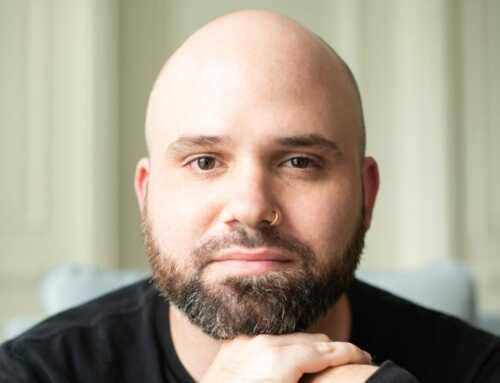
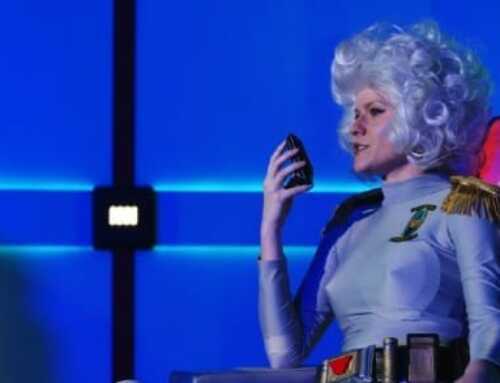
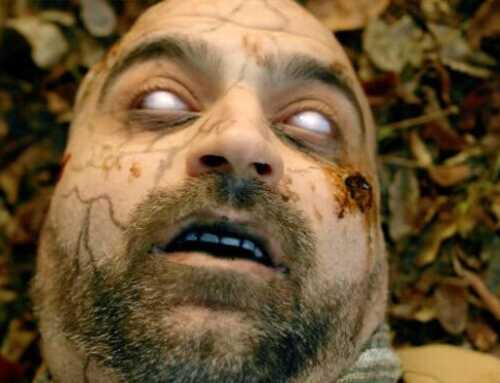
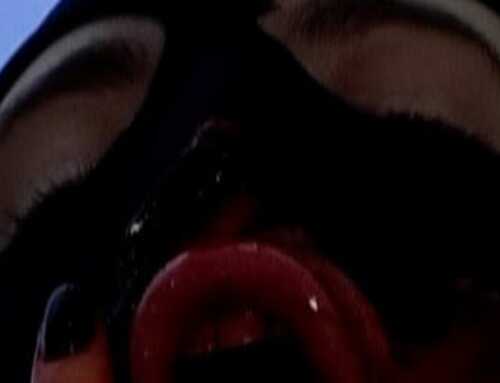

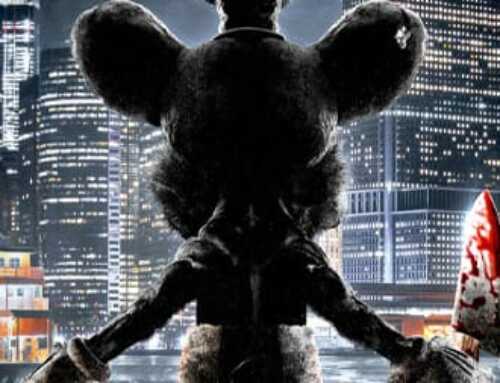
[…] Alix Kingray Source link […]